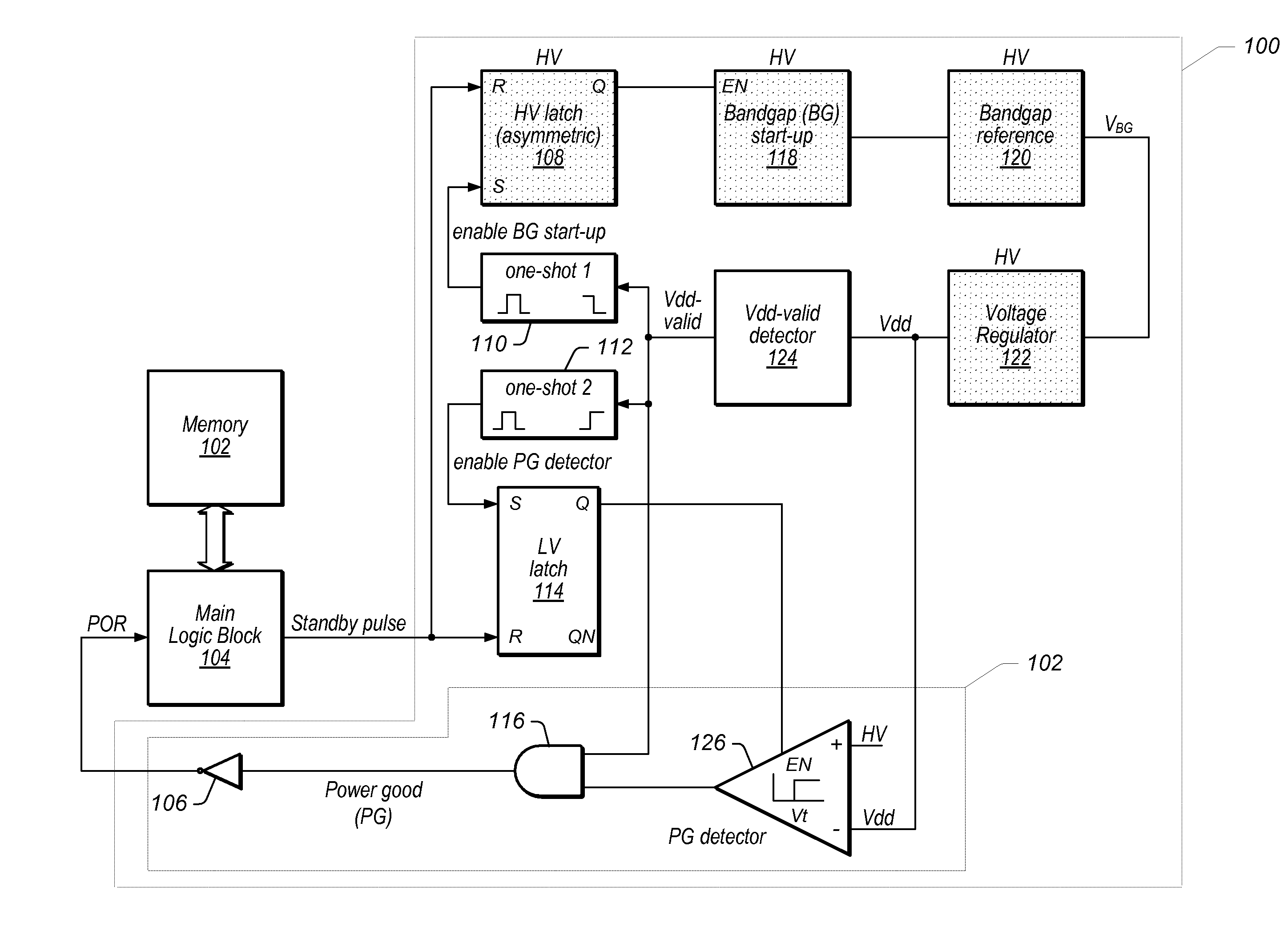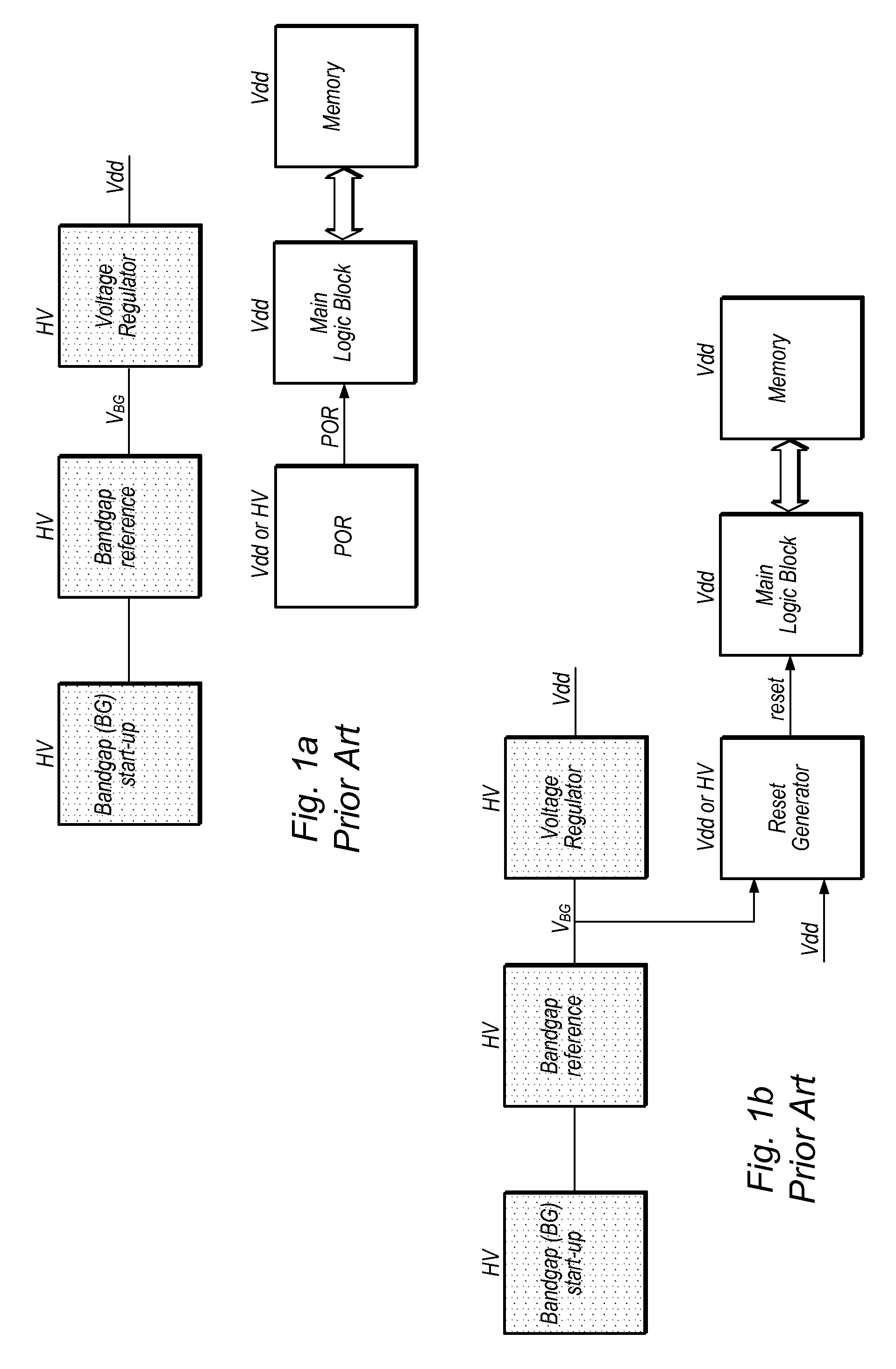Power-up Control for Very Low-Power Systems
a technology of power supply control and very low-power systems, applied in the direction of pulse automatic control, pulse technique, electronic switching, etc., can solve the problem that the realization of such high time constants on chips may take up too much space to be practical, and add to undesired quiescent currents in the system, so as to accurately control the level of vdd
- Summary
- Abstract
- Description
- Claims
- Application Information
AI Technical Summary
Benefits of technology
Problems solved by technology
Method used
Image
Examples
Embodiment Construction
[0022]As used herein, the term “nominal value” is used to denote an expected, stable value. For example, the nominal value of a first supply voltage is used to denote the final, stable value reached by the first supply voltage. While the term “nominal” typically refers to a specified theoretical value from which an actual value may deviate ever so slightly, in order to simplify references to certain voltage values detailed herein, “nominal value” is used to refer to the final, expected stable value reached by a supply voltage. For example, as used herein, when a supply voltage has a nominal value of 1.9V, it means that the supply voltage is configured to settle and reside at a value of 1.9V. Of course, the actual value of the supply voltage may deviate ever so slightly from this value, and such deviations are meant to be accounted for when using the term “nominal value”. In other words, when a first supply voltage is said to have a value that is higher by a specific difference volta...
PUM
 Login to View More
Login to View More Abstract
Description
Claims
Application Information
 Login to View More
Login to View More - R&D
- Intellectual Property
- Life Sciences
- Materials
- Tech Scout
- Unparalleled Data Quality
- Higher Quality Content
- 60% Fewer Hallucinations
Browse by: Latest US Patents, China's latest patents, Technical Efficacy Thesaurus, Application Domain, Technology Topic, Popular Technical Reports.
© 2025 PatSnap. All rights reserved.Legal|Privacy policy|Modern Slavery Act Transparency Statement|Sitemap|About US| Contact US: help@patsnap.com



